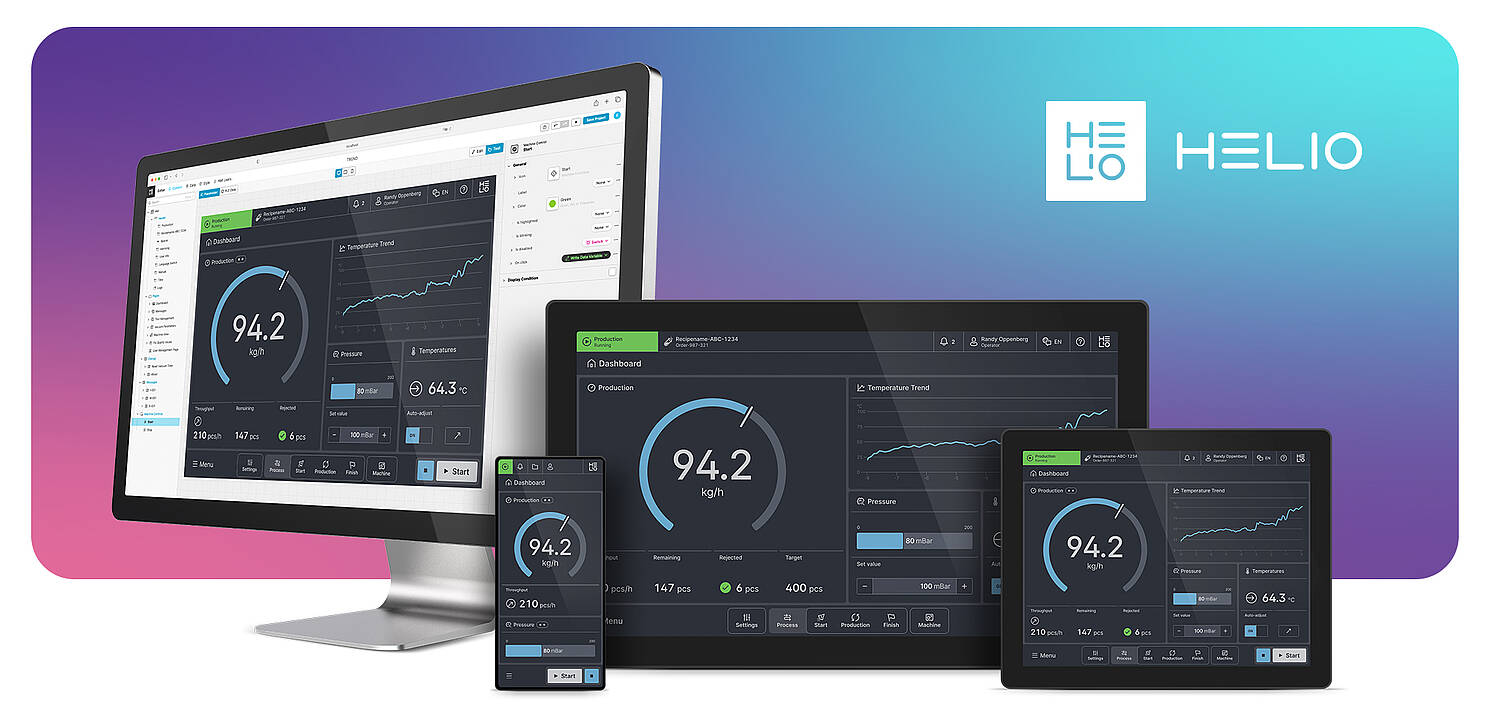HELIO: Innovative concept for the HMI of the future
Independence thanks to the use of web technologies
The human machine interface (HMI) in machine and plant manufacturing is changing: more flexibility is required in view of the fluctuating market situation and changing supply chains and times. It needs to be faster, both in the creation and customisation of user interfaces. It should also be easier to use, i.e. require no installation, programming or specialised knowledge.

KEB Automation and HMI Project have joined forces to meet these challenges and offer a solution with the HELIO HMI management system. Its responsive design ensures that only one HMI is configured and can then be used on different panels and mobile devices. The HELIO development environment can be used via a web browser regardless of location and platform. Users create the structure of their HMI and HELIO takes care of the layout. The HMI is directly available live as it will later be used on the machine.
Simple project planning and development with real-time data
HELIO provides the framework for a design system in which the HMI developer(s) can work together. This system can be used directly in the development environment and enables the creation of HMIs from a single source – without the need for any programming knowledge. This is where the experience of HMI Project and KEB comes into play. This ensures that the end result is intuitive to use (usability) and creates a positive user experience.
Working with live data is a key advantage of the innovative concept of the HMI management system. When editing an HMI with HELIO, the real HMI of the machine is displayed instead of a static image of the underlying application. This eliminates time-consuming and nerve-wracking intermediate steps, as there is no compiling between the editor and the finished HMI. In addition, the use of proven web standards in the creation of HMIs enables the user to work across platforms on any device with an up-to-date browser. This makes working independent of the hardware or software used and creates significantly more flexibility. Another aspect is the durability of the system. Designed user interfaces are future-proof, as the replacement of hardware – be it displays, computers or machine components - has no impact on usability. HELIO is also completely flexible when it comes to the type of input method, whether mouse, keyboard or touch.
True responsiveness without programming effort
Editing HMIs in HELIO itself is so easy that faster and better results can be achieved. This reduces the learning and transfer time and therefore the costs. No programming knowledge is required to create an HMI with HELIO, which means that project planning is no longer a software development project. This allows the control system developer of a machine manufacturer to focus on his core competence.
In future, industrial HMIs will need to be highly customisable for a variety of reasons. For example, suppliers of panels may change, larger HMI panels may become available or customers may want to equip shift supervisors with mobile tablets so that they can monitor machines from anywhere in production. Responsive design in HMIs is inspired by the architecture of modern websites: The elements of the HMI adapt intelligently to the respective end device.
